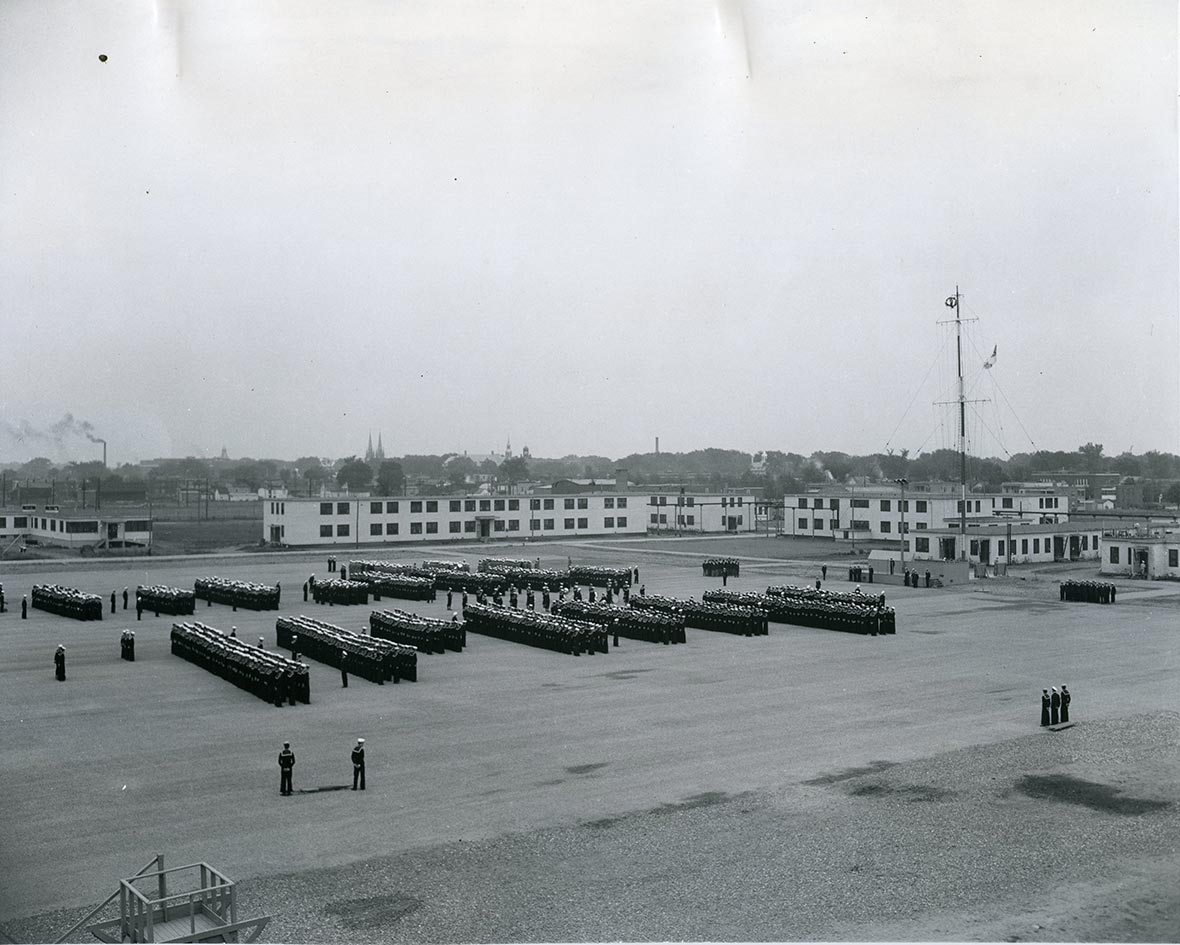HMCS St. Hyacinthe
There has been only one establishment named HMCS St. Hyacinthe in the Royal Canadian Navy.
HMCS St. Hyacinthe (Base)
The history of HMCS St. Hyacinthe began in 1941 when it was found necessary to increase the capacity of the naval signal (communication) school (formerly at the Exhibition Grounds in Halifax, Nova Scotia) from 800 to 2 600. No suitable accommodation could be found in eastern Canada, but buildings of Militia Training Centre No. 46 were found available in Saint-Hyacinthe, Québec. It was more economical to add to the existing plant than to build afresh in a new place so this site was chosen. On 1 October 1941, the new signal school was commissioned into the Royal Canadian Navy, as HMCS St. Hyacinthe.
Communications training at HMCS St. Hyacinthe consisted of courses for: Visual Signalmen (V/S), Wireless Telegraphists (W/T), Coders, Radar Operators, and Radio Artificers. The Wrens (Women's Royal Canadian Naval Service), after their arrival in HMCS St. Hyacinthe in 1943, took part in all these courses, with the exception of the one for Radio Artificers.
Few of the sailors taking the primary courses at HMCS St. Hyacinthe had actual sea experience. Accordingly, great efforts were made to simulate sea conditions as far as possible in their work. Model ships’ bridges were built on the roofs of half a dozen buildings at the signal school and the signalmen manned these regularly to carry out ship-to-ship exercises with flags, projectors and semaphore. A “rolling bridge” unofficially known as the “rocking horse” had been constructed which simulated both the pitching and the rolling of a ship. This was used to train signalmen in semaphore and its object was not to test the ability of the sailor to withstand seasickness, but to teach him how to maintain his balance and send a legible message from an unsteady platform. In addition, they were trained in reading dim flashing exercises after dark. Signalman were also required to have a working knowledge of all signal publications, to know how to use and care for signal apparatus and to be familiar with the use and care of binoculars and telescopes. "St Hy" was able to turn out a proficient and worthwhile product for the ships and establishments of the navy.
Towards the end of 1944, the Royal Canadian Navy decided to fit frigates with Action Information Centres (command and control centres). On the basis of this, in February 1945, HMC Action Information School HMCS St. Hyacinthe was formed to teach officers and sailors theory and procedures for this system of the future. HMCS St. Hyacinthe was paid off on 20 February 1946.
- Date commissioned: October 1, 1941
- Date paid off: February 20, 1946
